Table of Contents
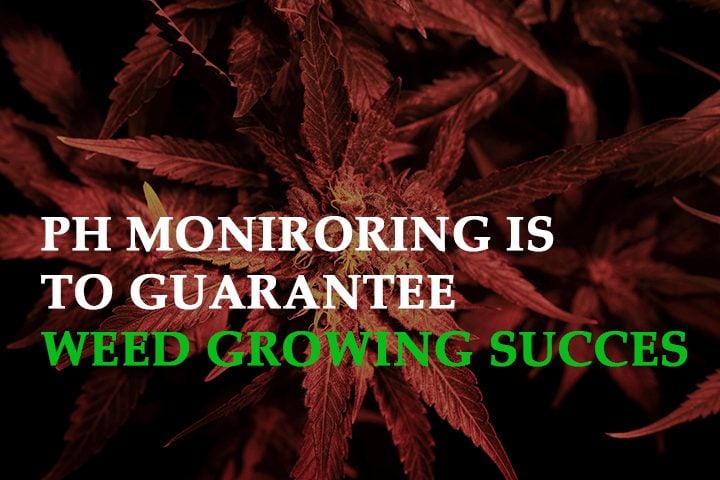
The letters “EC” represent Electric Conductivity. The EC stands for the amount of salt substance – or the measure of supplements in the soil or the water – you’re giving your plants.
The pH scale ranges from 0 to 14. The pH estimation of unadulterated water is 7. We call this neutral. At the point when the pH of a substance is lower than 7, it’s acidic; any worth higher than 7 is called basic or fundamental. Lemon juice is acidic and has a pH of 2. Lime has a pH of 9 and is subsequently fundamental.
The pH is a logarithmic scale: if something is twice as acidic (multiple times all the more free hydrogen particles), the pH drops by one unit. If a substance is twice as acidic, the pH drops by two units.
Soil with a pH of 4.5 is along these lines a hundred times more acidic than soil with a pH of 6.5. Soils with such a low pH have a turnover-bringing down impact. Cannabis plants that develop in such an acidic soil will doubtlessly experience the ill effects of an absence of nutrients because the roots are less fit for retaining supplements in such an acidic domain.
Plants utilize certain supplements from the soil to grow and bloom, for example, nitrogen, phosphor, iron, and magnesium. These supplements act distinctively at various pH levels. This is because the pH figures out what the mixes of those supplements will do; break up.
You can contrast it with calcium in faucet water. In case that the water is cold, you won’t see it by any means, and it’s disintegrated. Be that as it may, when you bubble it, the dissolvability diminishes, and it hastens. Or on the other hand, when you break down calcium in with disintegrated magnesium, it encourages and transforms into gypsum.
The pH does a comparative thing. At a specific degree of acridity, a few components structure different compounds that aren’t absorbable by the underlying roots of the plant. In a condition where the pH is excessively low, for example, when it is exceptionally hard for your cannabis plant to assimilate magnesium. This leaves remaining magnesium in the soil; however, it’s never again accessible to the plant. This can prompt an absence of magnesium, making your plant stunted.
Low pH
High pH
For this situation, your plant will give indications of a magnesium deficiency. The center leaves turn yellow and white, while the veins stay green. Giving your plant more magnesium, be that as it may, isn’t the remedy, because there’s as of now enough of it in the soil. The plant can’t ingest it. The remedy is to build the pH of the soil, so your plant can assimilate the magnesium once more.
As a rule, composts and mineral supplements are less retained at a higher pH. If there should arise an occurrence of a low pH, the accessibility may be excessively huge, causing an abundance. If you cultivate cannabis on soil, it’s ideal for keeping up a pH of 6. In case that you cultivate it on Rockwool or on another kind of hydro, attempt to keep up a pH of 5.5.
The water you provide for your plants impacts the pH estimation of the soil they live in. To accomplish ideal outcomes, you ought to give your plants water with the correct pH. There are a few different ways to identify your water’s pH cannabis growing.
The least expensive method is to utilize pH strips. Hold the strip submerged for a few seconds and hold up 30 seconds. The shading 3D squares will change, and by contrasting them with the hues on the crate, you can decide the pH of the water. The disadvantage of these strips is that they’re not precise. Likewise, you may need to quantify on various occasions for each watering whether you need to modify the pH worth or you continue utilizing another strip.
Since faucet water consistently contains some mineral supplements, the pH of the water will never be correct (pH 7), yet it will, for the most part, be higher. This is additionally because of the way that acidic water influences copper channels. The manure you give your plants through the water will bring down the pH, yet to get to a definite pH value of 6, you, for the most part, would need to bring down.
The ideal approach to do this is with pH down. You can buy this at stores since it’s additionally utilized for pools and aquariums. pH down normally comprises of nitric or phosphoric corrosive and has a pH of 0.3. One drip of nitric corrosive on 2.5 gallons of water will bring down the pH by 1.
If your water’s pH is too low in the wake of including your supplements, it’s conceivable to expand it a piece. The ideal approach to do this is by utilizing pH up (potassium hydroxide), likewise accessible at stores. One drip of it in 2.5 gallons of water will build the pH.
In case you’re cultivating pines, it’s better to accept that the soil is acidic, in light that the pine trees germinate in acidic soil. A simple method to expand the pH of acidic soil is to sprinkle lime. Lime improves the structure of the soil and invigorates the hydrogen particles, expanding the pH. Sprinkle a full hand for every 10 square feet and let the rain retain it into the soil. Measure the pH of the soil after a decent retain.
The benefit of cultivating on the soil is that it shapes a pathway for water and supplements, so a pH won’t quickly be adverse to the plant. Notwithstanding, the effects are that supplement salts can gather, expanding the EC value, and bringing down the pHs. For this situation, the incentive at the underlying root of the plant will be altogether different from the supplement water you’re giving, which could mess up the whole thing. A wide range of elements impacts the admission of supplements.
Suppose it has been a piece excessively cold in your cultivating room. A low temperature diminishes the vaporization through the leaves. This brings down the suction intensity of the plant, which is, in reality, imperative to ingest supplements through the roots. These supplements will stay in the soil and will gather, making the roots increasingly acidic. Also, a high sharpness of the soil thusly diminishes the working of the root hairs, further compounding the plant’s capacity to ingest supplements. Along these lines, the EC and pH of your supplement water can be great; however, the plant can, in any case, experience a lack or overabundance of supplements. That is the reason it’s imperative to gauge the pH and EC estimations of your soil once in a while.
Likewise, in case you’re developing outside, it’s a smart thought to take an example of the soil you’re giving your plants a chance to develop in. It’s simple and can counteract a lot of issues later on.
Presently we’ll examine an increasingly bit by bit portrayal, and you’ll be given a shopping list. To start with, how about we talk about the materials needed;
Take 3.5 fl ounces of soil, as near the roots as could be expected under the circumstances, and blend this in with 3.5 fl ounces of demineralized water in your estimating cup. Demineralized water doesn’t contain salts along these lines having an EC of 0. The pH at room temperature ought to be 7.0. You can buy demineralized water at a supermarket or drugstore. Give the blend a chance to sit for 24 hours and routinely mix it a piece to ensure all salts will appropriately break up in the water.
Following 24 hours, you put the blend through an espresso channel into the other estimating cup. Rehash this procedure until you have an unmistakable fluid. Measure the pH estimations of this fluid to discover what the qualities around the underlying roots of your plant are. The pH ought to be around 6.
Following 24 hours, you put the blend through an espresso channel into the other estimating cup. Rehash this procedure until you have a reasonable fluid. Measure the pH estimations of this fluid to discover what the qualities around the underlying root of your plant are. The pH ought to be around 6.
On the off chance that your EC in the soil is 1.0 and you need it to be 1.5, whenever you water the plant, use water with an EC estimation of 2.0. With this strategy, the EC estimation of your soil will get about 1.5. Take another estimation following two or three days to be it’s.
Rockwool is touchy to crummy pH levels since it doesn’t make a cushion for supplements or hydrogen particles. Most Rockwool cubes that are made for cultivating have a pH of 7. You should bring down this before you can begin cultivating. You can do this by leaving them in 5.5 pH water medium-term. The Rockwool will assume the estimation of the water.
Since Rockwool doesn’t have support, you need to give much nearer consideration to your pH. Other than washing the sections, you’ll likewise need to routinely quantify the pH estimation of the chunks. This is entirely simple; take distinctive water tests in the mats with a syringe. The best spot to direct aright pH estimation is near the roots. Put all water tests in an estimating cup and measure the pH.
If this is excessively high, you’ll need to flush it for more. In situations that it’s excessively low, you’ll need to expand the pH of the supplement water a piece until you get the right qualities.
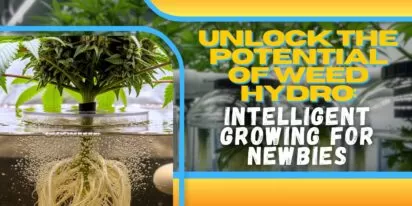
Curious about growing weed in a healthy, effective way? Welcome to the realm of weed hydro! This method uses water instead of soil, delivering n

Peyote Zkittlez is a unique cannabis strain that has quickly gained dedicated followers among enthusiasts and patients alike. Its parentage—Zk

As growers, we want strains that work well, are strong, and are of good quality. Autoflowering cannabis strains are a big step forward for both

Pot growers always ask the same basic question: How much weed does a weed plant produce? The answer is complex and depends on a multitude of var

Ever had the room spin after a few hits? You're not alone. Figuring out how to prevent getting dizzy high can make your cannabis experience a wh
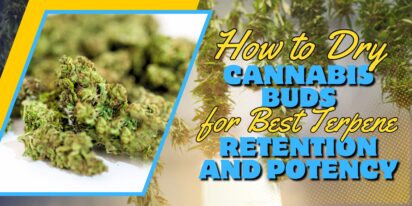
Drying cannabis properly is a critical process in preserving the plant's full aroma and flavor and its psychoactive abilities. Tampering with th

Ever caught yourself a bit too high and all of a sudden in need of being normal? Whether you're heading out for munchies or bumping into someone

Looking for sage advice on how not to get pinched with weed without batting an eye? Attempting to protect your stash from gossipy roommates, sno
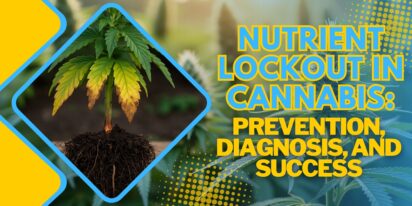
Nutrient lockout, also known as nutrient binding or chemical antagonism, is a significant issue in cannabis cultivation that negatively impacts
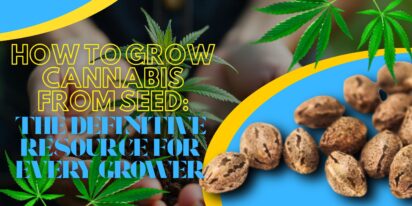
Germination is the most critical initial stage in growing healthy, high-quality cannabis plants. During germination, the dormant seed becomes a
Are You 18 Or Over?
By selecting “Continue”, you confirm that you are at least 18 years of age and legally permitted to access cannabis related content in your region.
By using Rocketseeds.com, you agree to our legal disclaimer.
Excellent blog here Also your website loads up very fast What web host are you using Can I get your affiliate link to your host I wish my web site loaded up as quickly as yours lol
Your writing is not only informative but also incredibly inspiring. You have a knack for sparking curiosity and encouraging critical thinking. Thank you for being such a positive influence!
Simply wish to say your article is as amazing The clearness in your post is just nice and i could assume youre an expert on this subject Well with your permission let me to grab your feed to keep updated with forthcoming post Thanks a million and please carry on the gratifying work
Somebody essentially lend a hand to make significantly articles Id state That is the very first time I frequented your website page and up to now I surprised with the research you made to make this actual submit amazing Wonderful task
Your blog is a beacon of light in the often murky waters of online content. Your thoughtful analysis and insightful commentary never fail to leave a lasting impression. Keep up the amazing work!
Thank you for the auspicious writeup It in fact was a amusement account it Look advanced to more added agreeable from you By the way how could we communicate
Your blog is a constant source of inspiration for me. Your passion for your subject matter shines through in every post, and it’s clear that you genuinely care about making a positive impact on your readers.
Your blog is a constant source of inspiration for me. Your passion for your subject matter is palpable, and it’s clear that you pour your heart and soul into every post. Keep up the incredible work!
Your articles never fail to captivate me. Each one is a testament to your expertise and dedication to your craft. Thank you for sharing your wisdom with the world.
Your blog is a testament to your dedication to your craft. Your commitment to excellence is evident in every aspect of your writing. Thank you for being such a positive influence in the online community.
Your writing has a way of resonating with me on a deep level. I appreciate the honesty and authenticity you bring to every post. Thank you for sharing your journey with us.
Your blog is a true gem in the world of online content. I’m continually impressed by the depth of your research and the clarity of your writing. Thank you for sharing your wisdom with us.
Hi i think that i saw you visited my web site thus i came to Return the favore Im attempting to find things to enhance my siteI suppose its ok to use a few of your ideas
Somebody essentially help to make significantly articles Id state This is the first time I frequented your web page and up to now I surprised with the research you made to make this actual post incredible Fantastic job
Usually I do not read article on blogs however I would like to say that this writeup very compelled me to take a look at and do so Your writing taste has been amazed me Thanks quite nice post
Your blog has quickly become one of my favorites. Your writing is both insightful and thought-provoking, and I always come away from your posts feeling inspired. Keep up the phenomenal work!
Every time I visit your website, I’m greeted with thought-provoking content and impeccable writing. You truly have a gift for articulating complex ideas in a clear and engaging manner.
Hey there You have done a fantastic job I will certainly digg it and personally recommend to my friends Im confident theyll be benefited from this site
I have read some excellent stuff here Definitely value bookmarking for revisiting I wonder how much effort you put to make the sort of excellent informative website
Nice blog here Also your site loads up very fast What host are you using Can I get your affiliate link to your host I wish my site loaded up as quickly as yours lol
What i do not understood is in truth how you are not actually a lot more smartlyliked than you may be now You are very intelligent You realize therefore significantly in the case of this topic produced me individually imagine it from numerous numerous angles Its like men and women dont seem to be fascinated until it is one thing to do with Woman gaga Your own stuffs nice All the time care for it up
Your blog is a beacon of light in the often murky waters of online content. Your thoughtful analysis and insightful commentary never fail to leave a lasting impression. Keep up the amazing work!
Your blog is a breath of fresh air in the often stagnant world of online content. Your thoughtful analysis and insightful commentary never fail to leave a lasting impression. Thank you for sharing your wisdom with us.
Your blog is a beacon of light in the often murky waters of online content. Your thoughtful analysis and insightful commentary never fail to leave a lasting impression. Keep up the amazing work!
Usually I do not read article on blogs however I would like to say that this writeup very compelled me to take a look at and do it Your writing style has been amazed me Thank you very nice article
Your writing has a way of resonating with me on a deep level. I appreciate the honesty and authenticity you bring to every post. Thank you for sharing your journey with us.
This hydroponics guide is quite the buzz, seriously! Who knew growing weed without dirt could be so complicated yet potentially rewarding? The breakdown of systems like DWC and NFT is helpful, though I suspect my cat might confuse the air pump for a toy. The idea of cleaner buds is tempting, especially since explaining hydro weed to my non-growing friends might get messy. And the bit about potential dizziness from hydro weed? Perfect, now I have an excuse for why I always stumble a bit after a grow session. Still, the promise of faster grows and higher yields is hard to ignore, even if it means more trips to the pH meter than to the coffee shop. Overall, a cultivating read for the curious grower!